Books 17 Dec 2012 08:18 am
Heath Book – 3
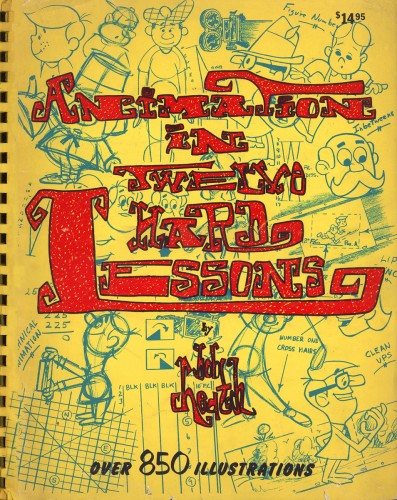 - When I was younger, animation books were hard to come by. There were books like The Art of Walt Disney by Robert Field or The Art of Animation by Bob Thomas, a couple of books by John Halas, or the Preston Blair Animation book. Some of these were readily available and not too expensive (I bought the Preston Blair book for $1.99 – list price) others were considered rare books and were not only expensive but hard to find.
- When I was younger, animation books were hard to come by. There were books like The Art of Walt Disney by Robert Field or The Art of Animation by Bob Thomas, a couple of books by John Halas, or the Preston Blair Animation book. Some of these were readily available and not too expensive (I bought the Preston Blair book for $1.99 – list price) others were considered rare books and were not only expensive but hard to find.
One book that was advertised in the back of magazines that were about film and/or animation was the Robert Heath/Tony Creazzo book Animation in Twelve Hard Lessons. For some reason, over many years, I never bought a copy for myself. As a matter of fact, I never actually even saw a copy at arm’s length. It was always not there.
Now, I’m spending some time at Buzzco, Candy Kugel’s studio. Lo and Behold, there was a copy of the book, and I finally got a chance to go through it. In fact, I’ve decided to post it on line and have found it to be pretty good. It starts out on the most basic level but gets more and more professional. Today’s post is about exposure sheets and planning for the camera. There’s a lot of information there. Much of it isn’t used in quite the same way it once was, but believe me knowledge of this goes a long and far way toward helping to make the film making process more solid and professional.
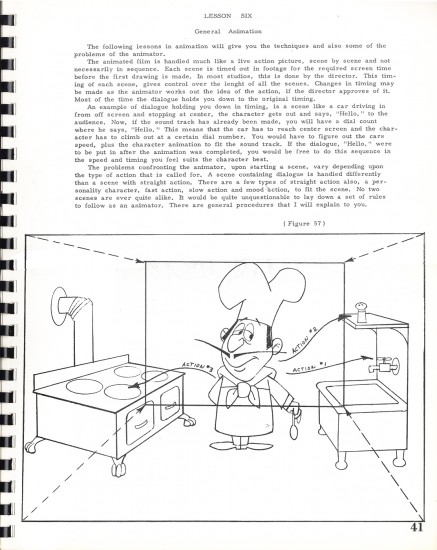 41
41
I was not quite sure whether to continue today’s post or to stop here cutting off the next lesson until next time. The material upcoming is so dense in its technology (however dated, given that most of us are using computers these days) that I was confident most readers would just zip past that material. However I decided to include it today. I didn’t see the need to stretch the book out, and I thought the dedicated will stay with it.
There’s a ripe history there among the Oxberries and the optical printers. I’m sure back in the day of the classical animator, most of them probably didn’t know what the equipment actually was or what it did. The animator was involved with the line and the movement, the background person focused on the color planes they created. Who cared what they shot it on or how they did a dissolve. Of course, then there were the people like me who not only wanted to know how these machines worked but wanted to do it themselves. In fact, that was the case. For the first few years I shot my own animation on an animation stand I built out of an old WWII device used for creating ID cards. The only part that came from the Oxberry factory was the platen; I was too concerned about it being the proper kind of glass and the weight of the springs being just right. I eventually moved up to a rented Oxberry stand and would should overnight, and finally, I considered myself something of a success when I was able to hire a camera crew to actually film the material for me.
For the geeks out there who were like me, here’s the next chapter.
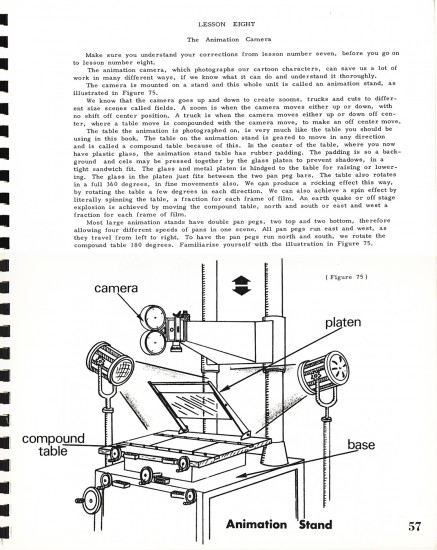 57
57
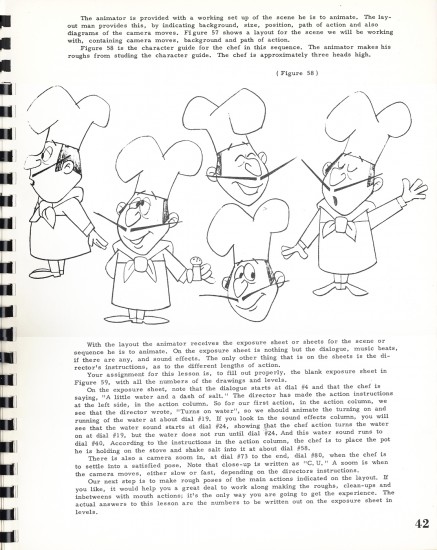
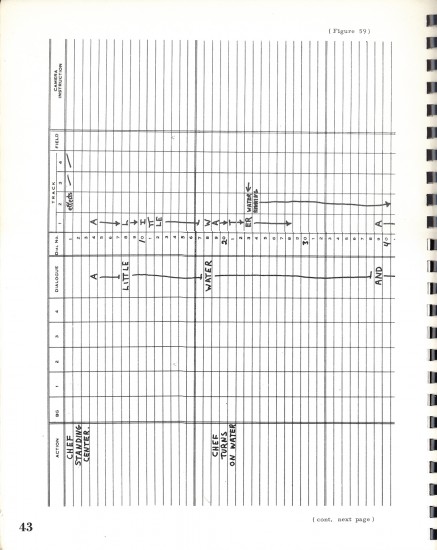
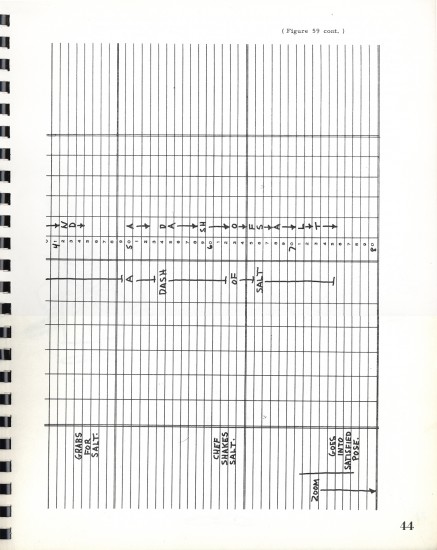
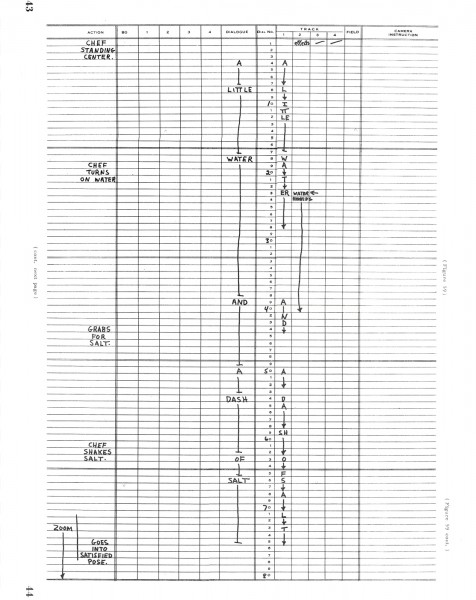
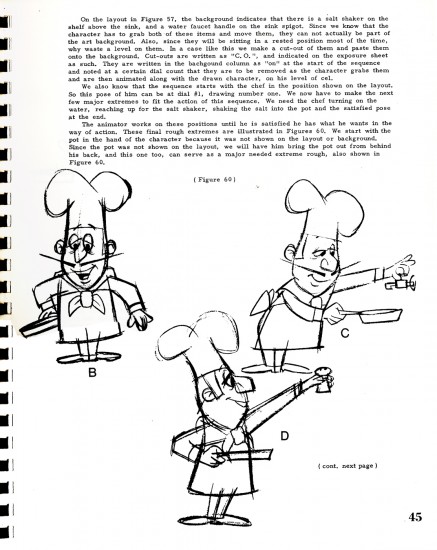
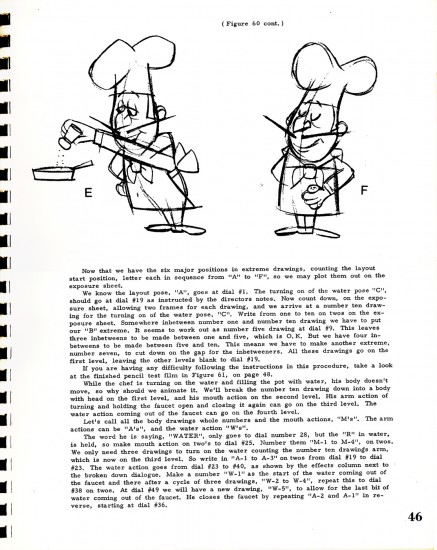
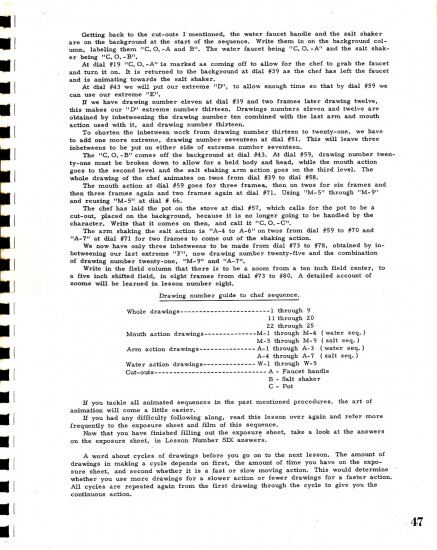
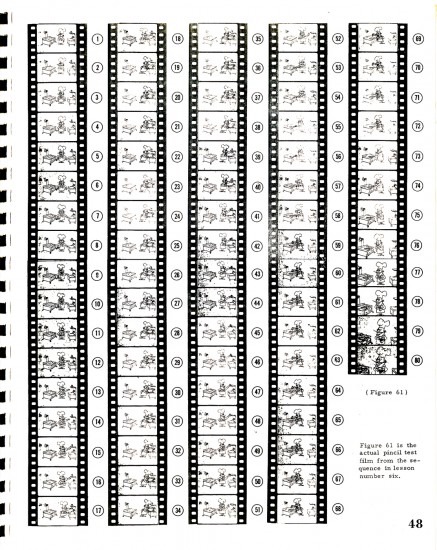
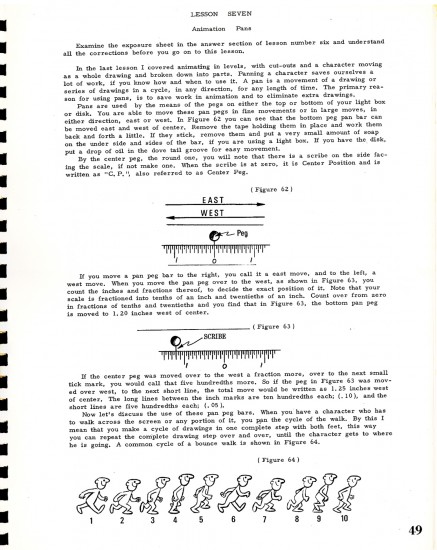
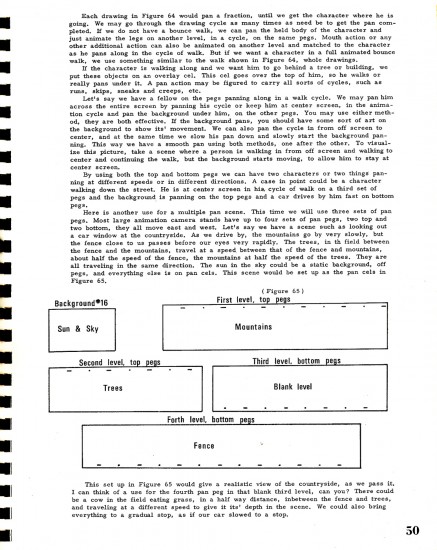
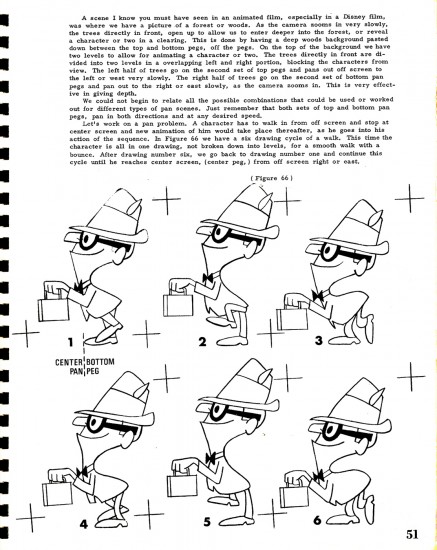
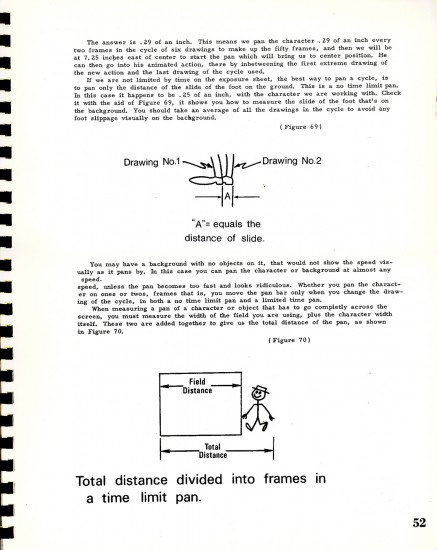
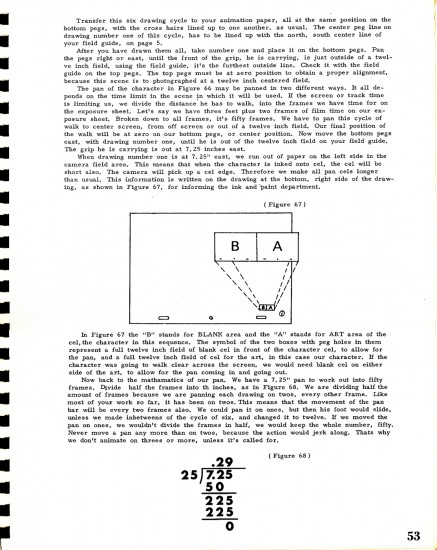
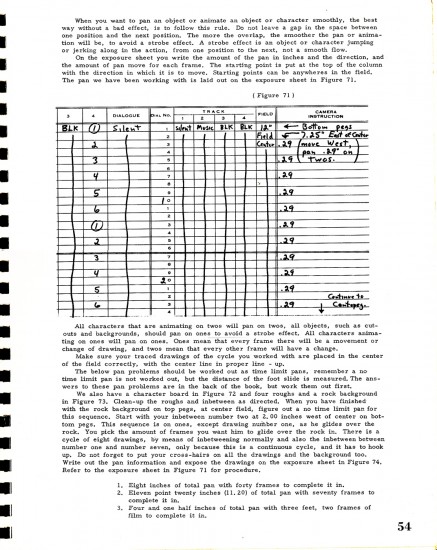
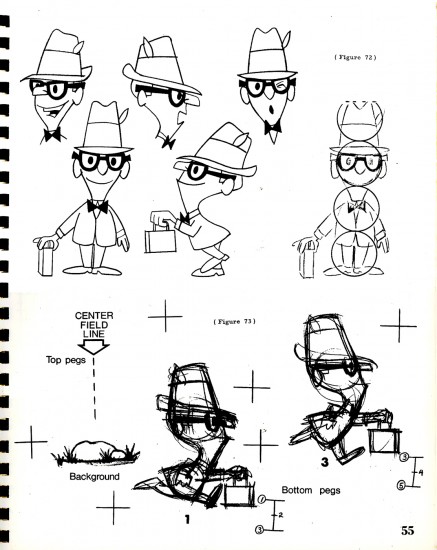
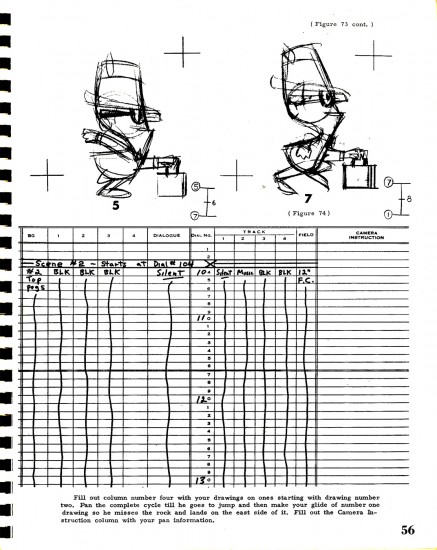
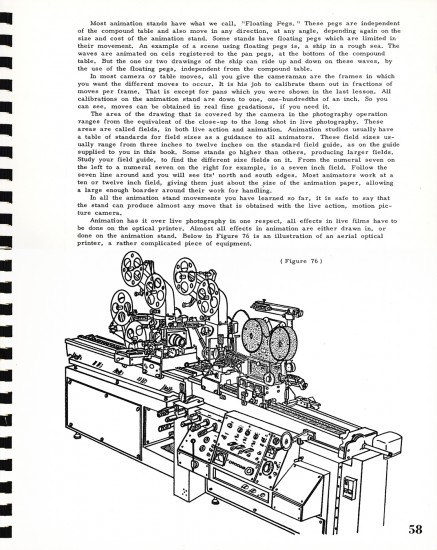
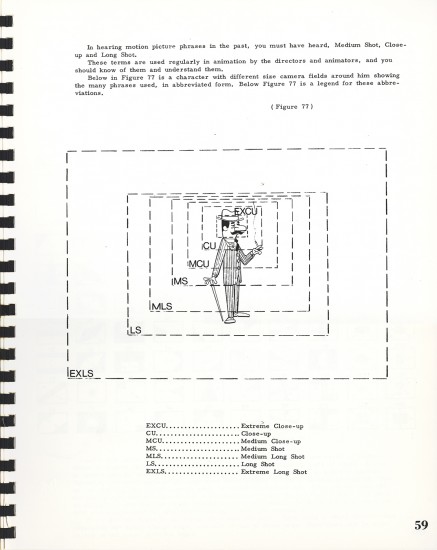
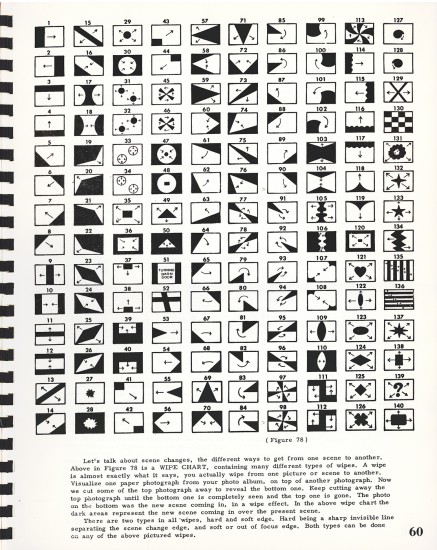
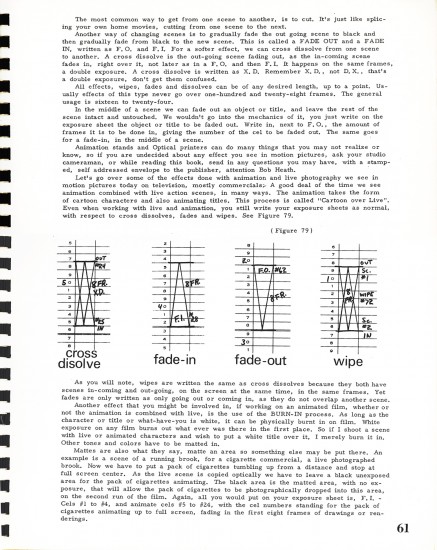
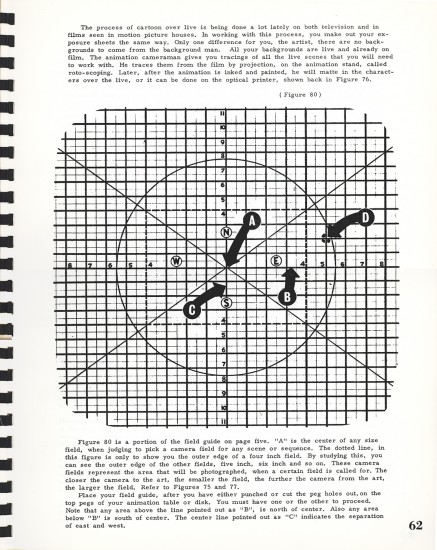
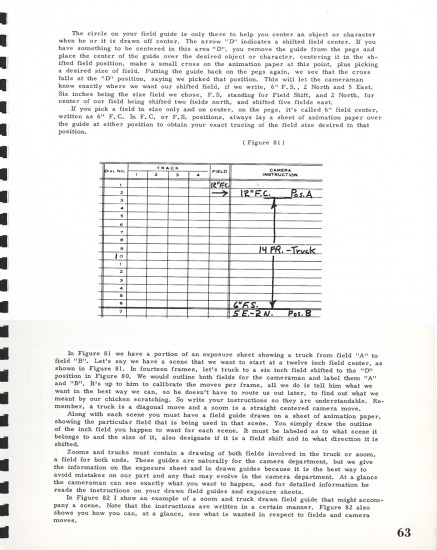
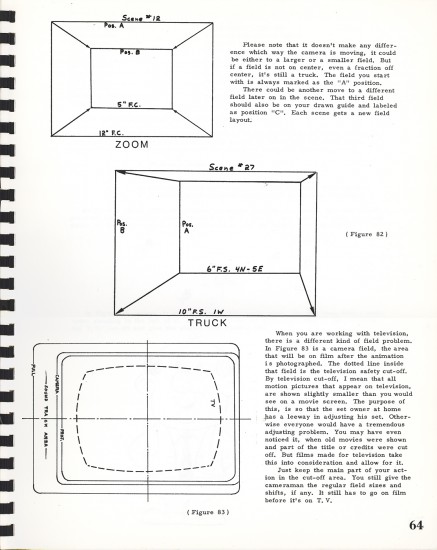
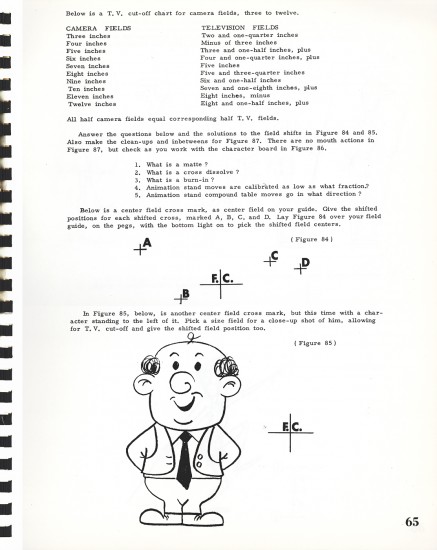
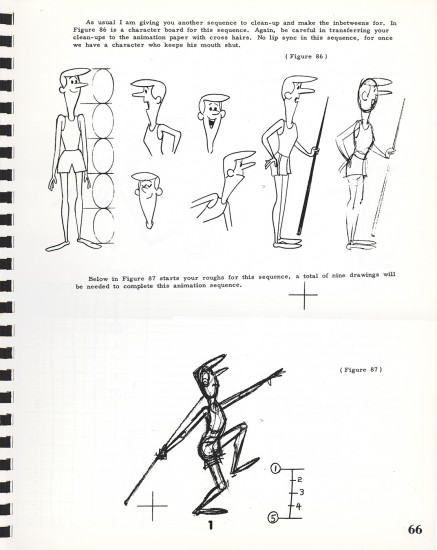
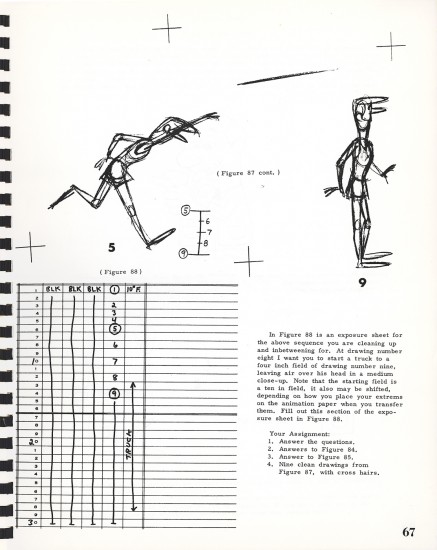

on 17 Dec 2012 at 9:29 am 1.Lew said …
thanks
on 18 Dec 2012 at 1:18 am 2.Alfred von Cervera said …
Thank you so much for posting this book. It is helping me a lot.
on 18 Dec 2012 at 3:12 pm 3.Ray K. said …
Fun to read through. Though not the best lesson in working methods to call for that .29″ BG pan increment, which, absent a computer on the stand, is all but begging for a camera error and an unhappy cameraman. Would it have killed him to scale the cycle the tiniest bit bigger so they could pan at a nice, clean .30″?
on 19 Dec 2012 at 9:01 am 4.Michael said …
Of course, you have to watch the math. You can’t just drive the pan into an even number becuase it’s easier. If the character is in contact with the background, then there’s a limit to how much that BG can be moved. For example, if each drawing moves the feet ahead – in a run – by .25, then that’s all you can move the BG without the character sliding. It’s especially tricky these days in that animators don’t seem to measure the moves anymore, except by deciding that it will move 30 inches not 29, when, in fact, it should move 29.
I know, Ray, that you know what I’m saying, but I hope I’m otherwise clear.
on 19 Dec 2012 at 9:46 am 5.Charles Brubaker said …
Even if it’s no longer being used, I’m glad you included the pages on cameras and optical printers. I find these things fascinating.
Thanks for posting!
on 25 Dec 2012 at 10:06 pm 6.RodneyBaker said …
The dedicated definitely will stay with it.
I like to look back at the old write ups on technology not used today with an eye for what might be some day.
It’s interesting to note the references seen here that appear from time to time in other places. As a for instance, the page with the tiny screen illustrations of the various wipes I’ve seen (uncredited) in several places. I’m not sure if this is where they were originally presented in this form but it seems reasonable that this could be the source of those particular illustrations.
As always, thanks for posting these!
on 28 Dec 2012 at 10:01 pm 7.Chris Sobieniak said …
My copy of the book just arrived in the mail today from an eBay listing that had it for a good price. I’m going to have a lot to learn from it!
on 12 Feb 2013 at 6:04 pm 8.Nick Furlano said …
I bought the book years ago in the late 1970s from Cartoon Colour (I think they had it one time) and had to try to sell or get rid of all my animation stuff for obvious necessary evils. I did not want to part from it because I felt I needed to work with it and study more from it. Although I am more presently devoted to Crash Course in Animation by Eric Goldberg and Animator’s Survival Kit. I ended up giving Animation in Twelve Hard Lessons to a local used book outlet. So many years ago. Thank you for helping me remember about it because of your post.
on 20 Aug 2014 at 7:01 pm 9.toronto buy sell art said …
Howdy, purely changed into alert to ones website by using Search engines, found that it must be really educational. I am just gonna be mindful for belgium’s capital. I’m going to be thankful when you proceed this specific later on. A lot of folks might be reaped the benefit away from your creating. Cheers!